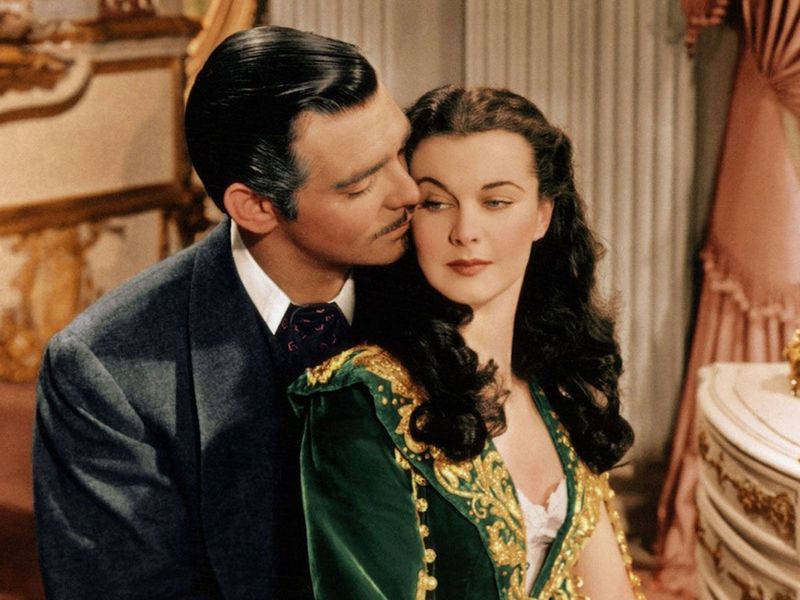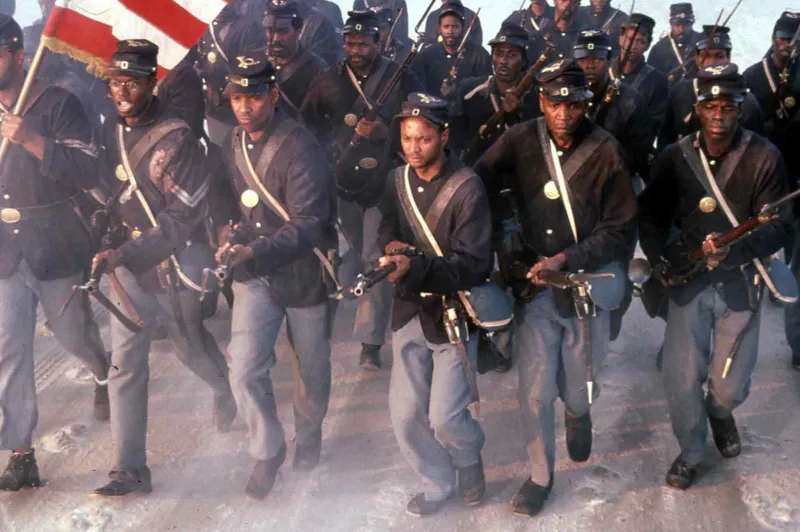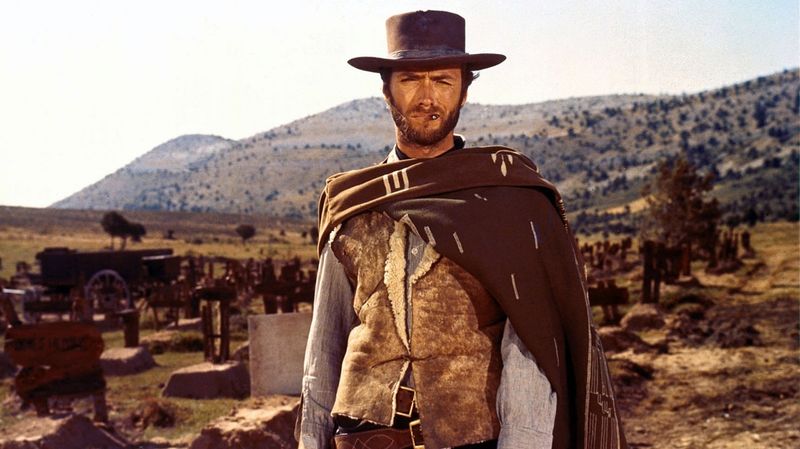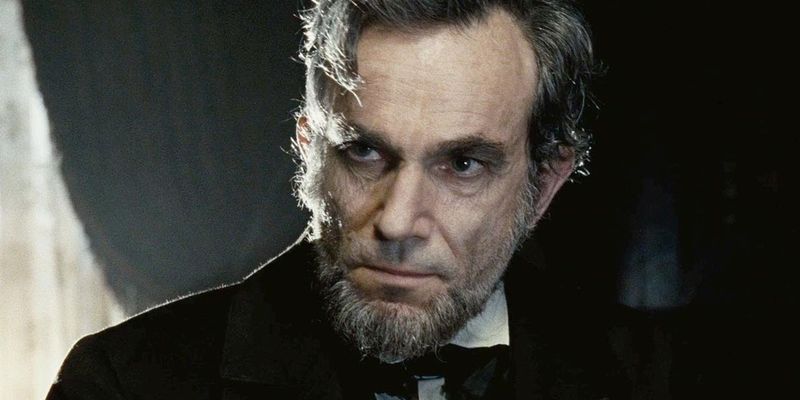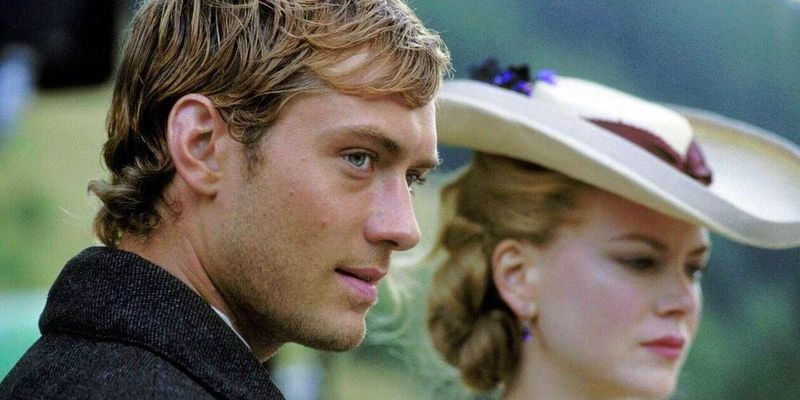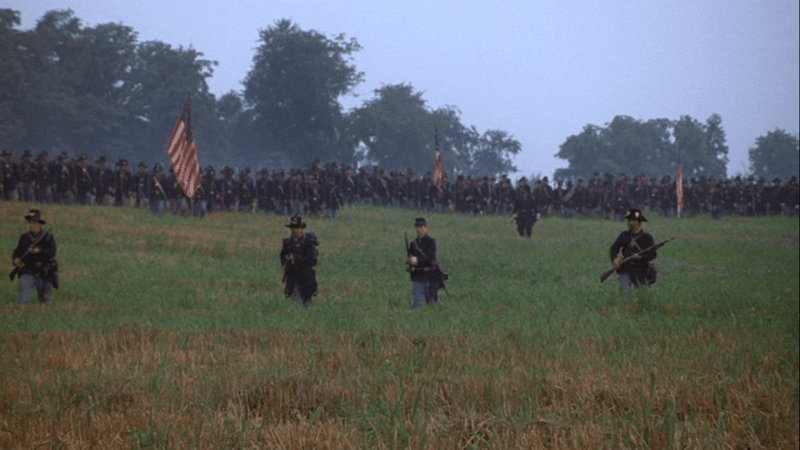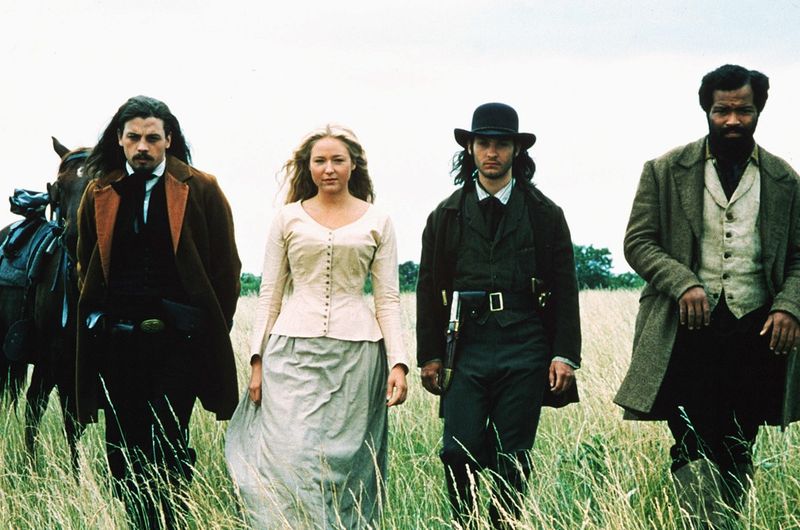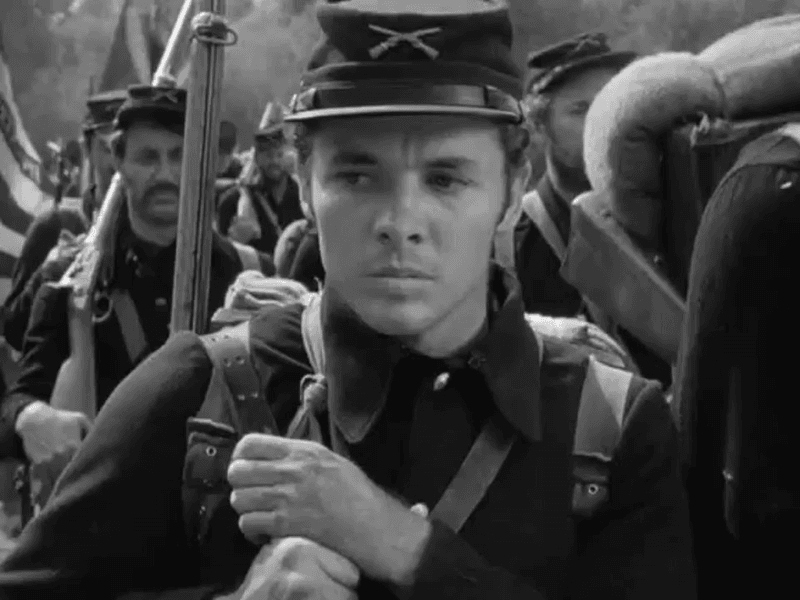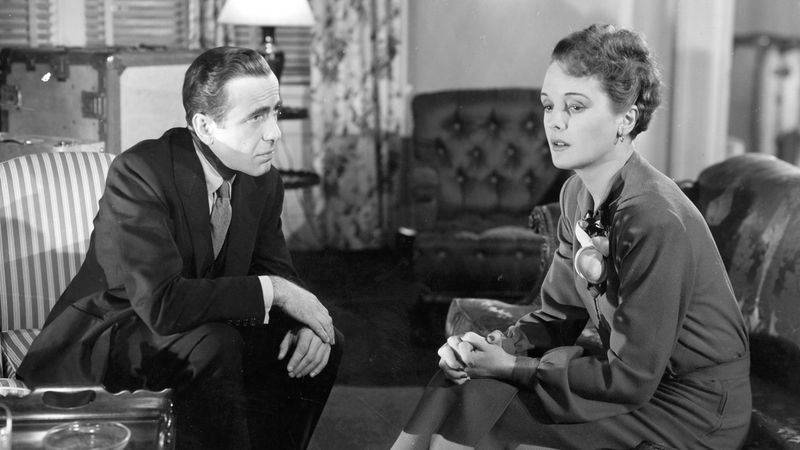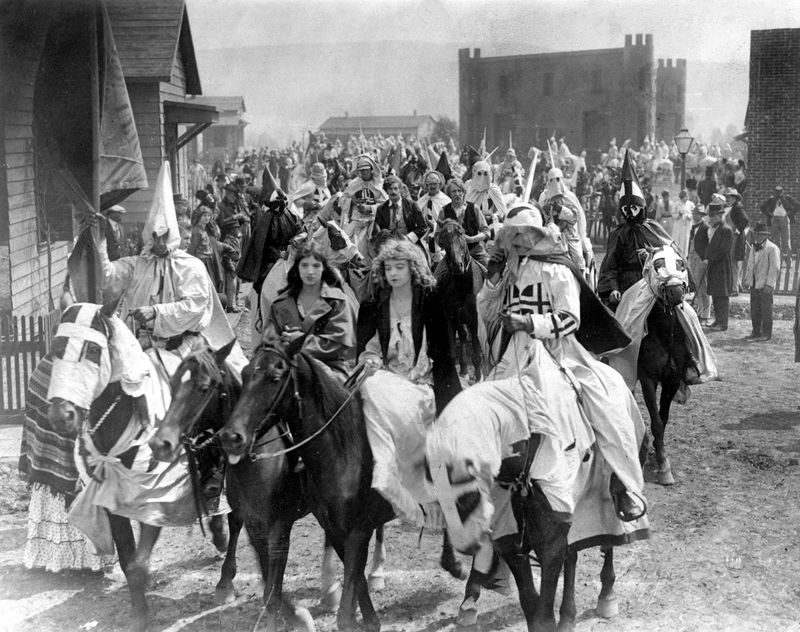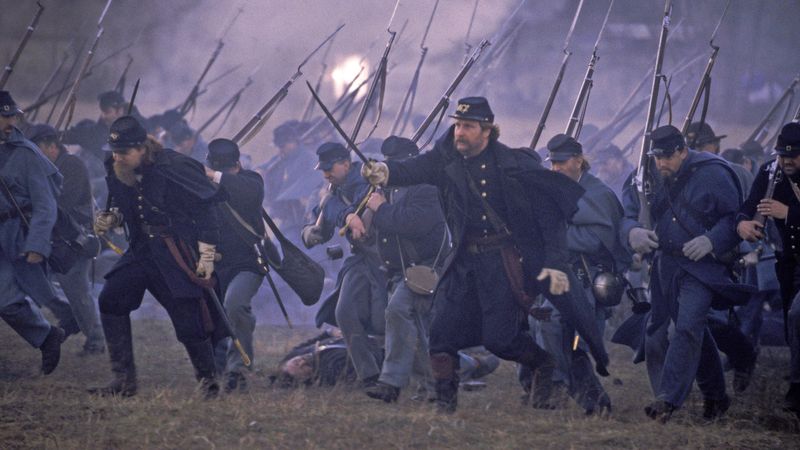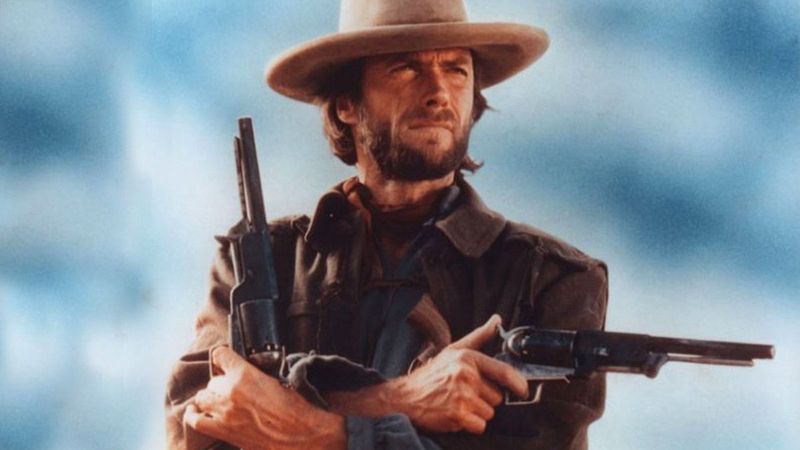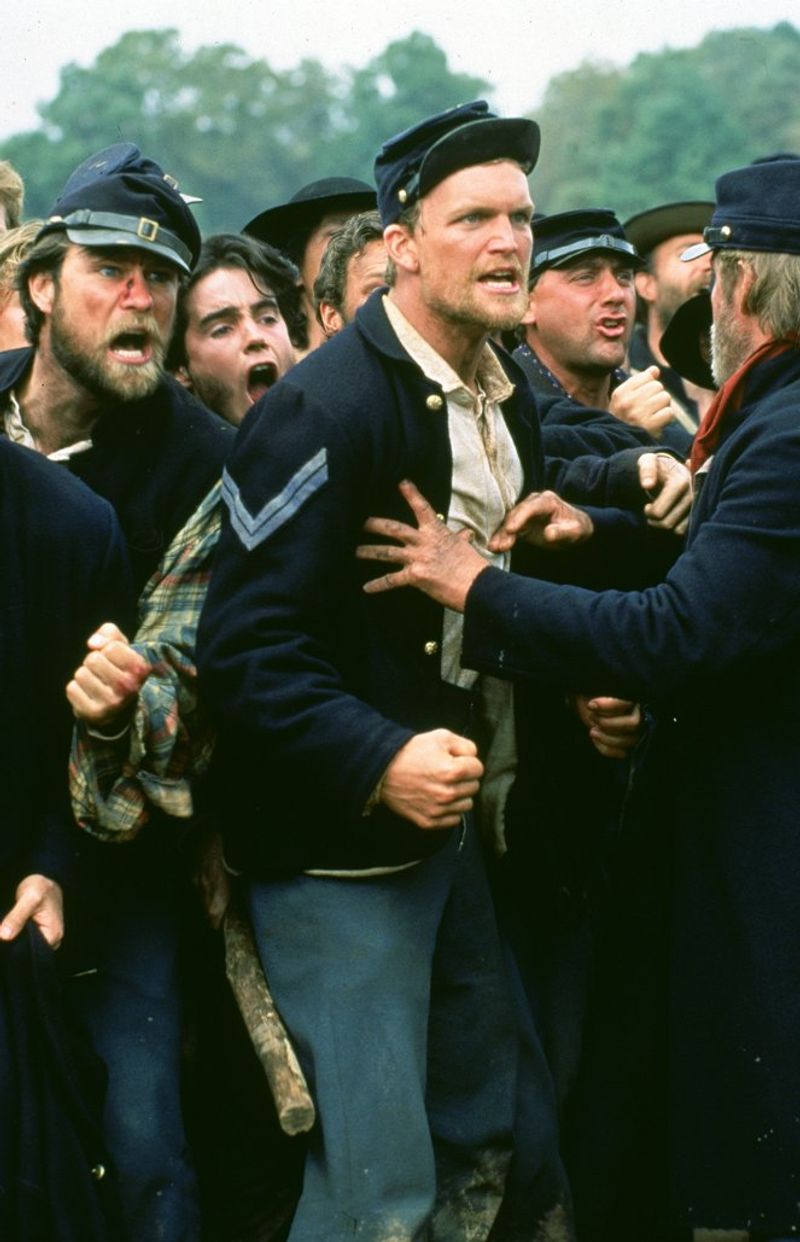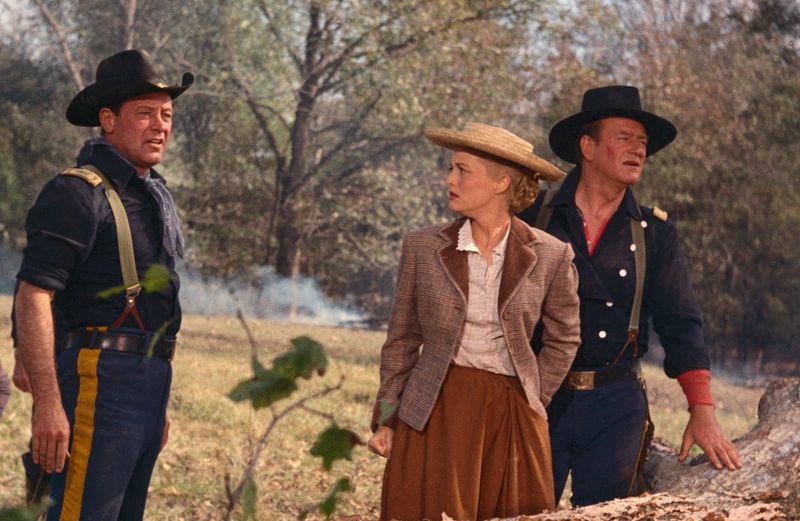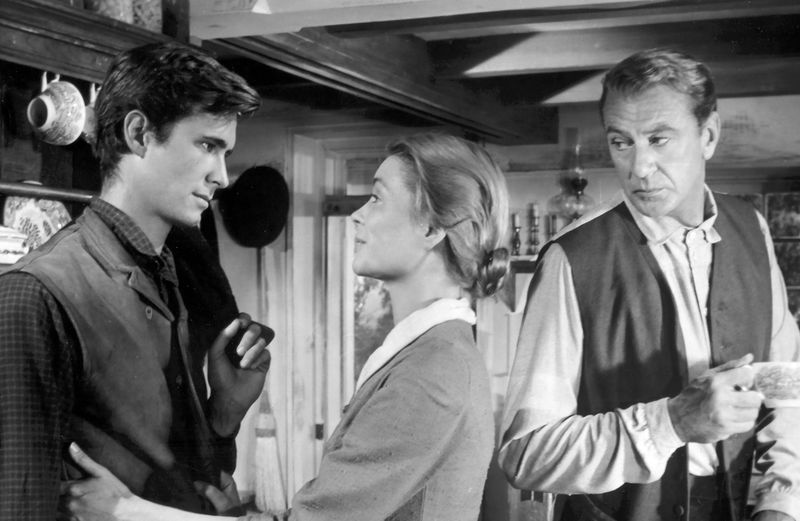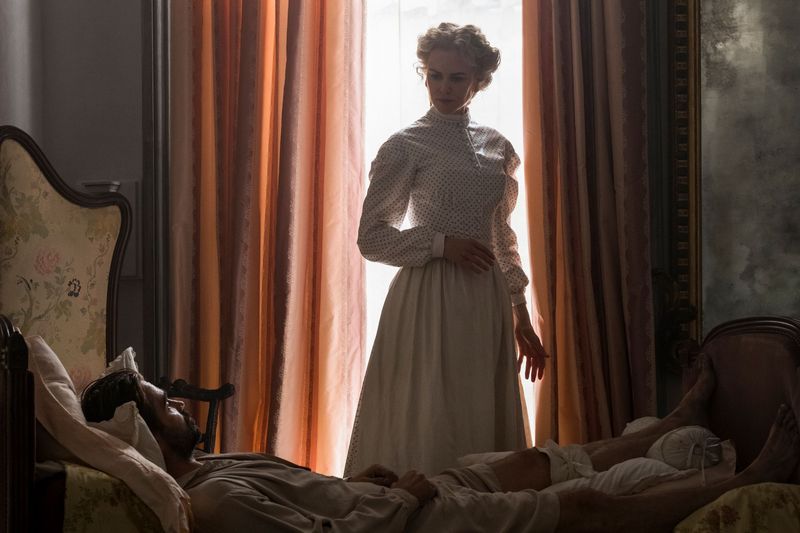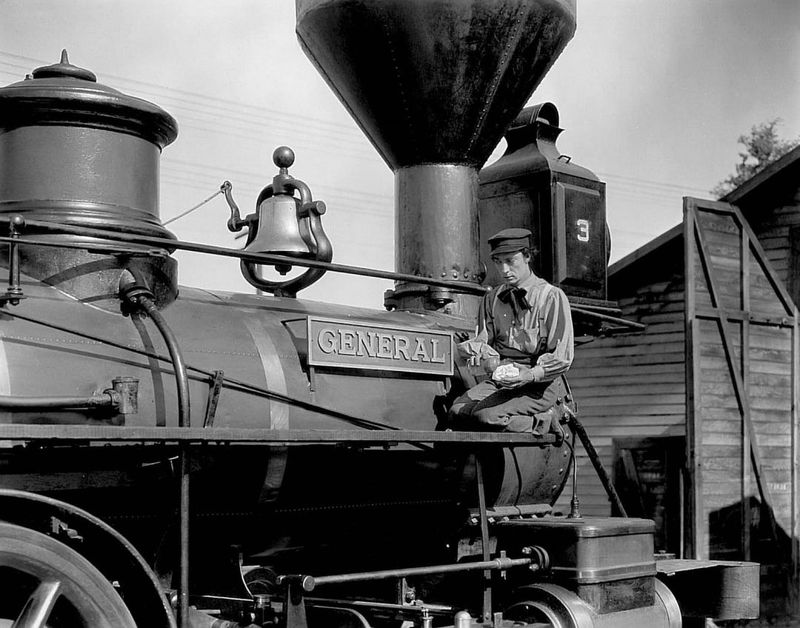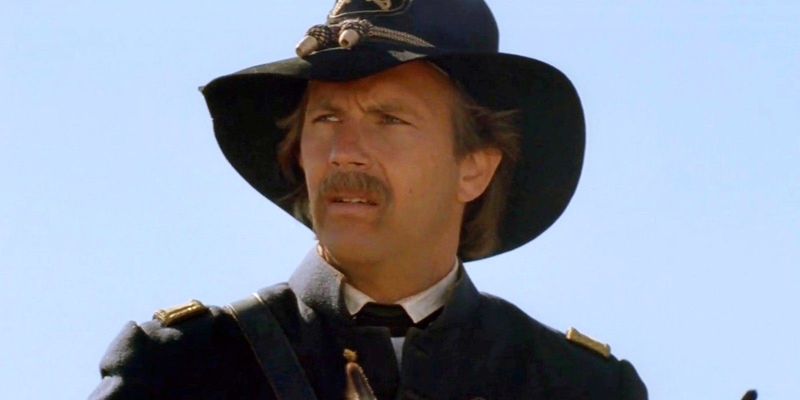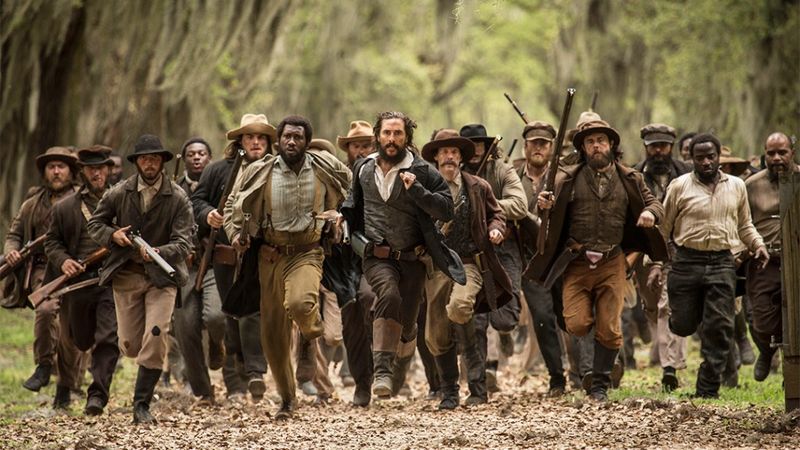The American Civil War continues to captivate filmmakers and audiences alike, offering powerful stories of courage, sacrifice, and moral complexity. For over a century, Hollywood has brought this pivotal chapter in American history to life through unforgettable characters and sweeping battlefields. These films not only entertain but also help us understand the war that forever changed our nation.
1. Gone with the Wind (1939)
Sweeping across plantation fields and burning Atlanta, this Technicolor masterpiece captured America’s imagination like no other Civil War film. Vivien Leigh’s Scarlett O’Hara embodied Southern resilience amid destruction.
Despite its problematic portrayal of slavery and romanticized view of the antebellum South, the film’s epic scale and emotional power remain undeniable. Eight Academy Awards later, it stands as Hollywood’s ultimate Civil War epic.
2. Glory (1989)
Raw and unflinching, this film shattered Civil War movie conventions by centering Black soldiers’ experiences. Denzel Washington’s tear-streaked face during the whipping scene remains one of cinema’s most powerful moments.
Following the 54th Massachusetts Infantry Regiment – one of the first Black units in the Union Army – the film doesn’t shy away from racism within Northern ranks. Its climactic assault on Fort Wagner showcases both heroism and heartbreaking sacrifice.
3. The Good, the Bad and the Ugly (1966)
Sergio Leone’s spaghetti Western masterpiece uses the Civil War as a haunting backdrop for greed and survival. The unforgettable scene of Blondie walking through a war-ravaged mission while Morricone’s score swells reveals the conflict’s human cost.
Clint Eastwood’s stoic gunslinger navigates both Union and Confederate territories with equal disdain. The film’s breathtaking cemetery finale takes place amid forgotten graves of Civil War soldiers – a powerful metaphor for war’s ultimate futility.
4. Lincoln (2012)
Daniel Day-Lewis disappears completely into Abraham Lincoln, capturing both the president’s folksy charm and steely determination. Spielberg wisely focuses on a single month – January 1865 – as Lincoln maneuvers to pass the 13th Amendment abolishing slavery.
The backroom politics prove as thrilling as any battlefield sequence. Tommy Lee Jones delivers a fiery performance as abolitionist Thaddeus Stevens, while the film’s haunting opening scene of Black and white soldiers reciting the Gettysburg Address to Lincoln himself sets the perfect tone.
5. Cold Mountain (2003)
Heartbreak permeates every frame of this achingly beautiful wartime romance. Jude Law’s Confederate soldier Inman walks hundreds of miles home to his beloved Ada (Nicole Kidman), witnessing the war’s devastation on Southern society.
Meanwhile, Ada struggles to survive with help from the fierce, independent Ruby (Renée Zellweger in her Oscar-winning role). The film’s opening battle sequence at Petersburg recreates the horrific mine explosion with stunning realism, setting up Inman’s journey through a morally ravaged landscape.
6. Gettysburg (1993)
Meticulously recreated with thousands of Civil War reenactors, this four-hour epic captures July 1863’s pivotal battle with remarkable accuracy. Jeff Daniels shines as Colonel Joshua Chamberlain, whose bayonet charge down Little Round Top became legendary.
Martin Sheen’s thoughtful portrayal of Robert E. Lee contrasts with Tom Berenger’s fiery Longstreet. The film’s emotional centerpiece – Pickett’s Charge – unfolds in real-time, allowing viewers to experience the terrible beauty and futility of the Confederacy’s greatest gamble.
7. Ride with the Devil (1999)
Ang Lee’s overlooked gem explores the chaotic “bushwhacker” warfare along the Kansas-Missouri border. Tobey Maguire plays Jake Roedel, a Southern sympathizer whose friendship with a free Black man (Jeffrey Wright) challenges his Confederate loyalties.
Unlike most Civil War films, it focuses on irregular fighters rather than formal armies. The brutal Lawrence Massacre sequence shows the conflict at its most savage and personal. Singer Jewel delivers a surprisingly nuanced performance as a young widow caught between warring factions.
8. The Red Badge of Courage (1951)
Real-life war hero Audie Murphy brings authentic vulnerability to Stephen Crane’s classic novel about a young Union soldier facing his fears. Director John Huston strips away Hollywood glamour, creating a stark psychological portrait of combat anxiety.
Shot in stark black and white, the film captures the chaos and terror of 19th-century warfare through impressionistic battle sequences. The Youth’s journey from shame to redemption unfolds against hauntingly empty landscapes dotted with exhausted soldiers – war stripped to its essential human elements.
9. Shenandoah (1965)
Jimmy Stewart’s weathered face tells the whole story in this heartbreaking tale of neutrality becoming impossible. As Virginia farmer Charlie Anderson, he memorably declares, “This war is not mine and I take no note of it.”
The film’s power comes from watching his principled stance crumble as sons are drafted, captured, or killed. A devastating cemetery scene where Stewart calls out for his lost boy became the film’s emotional centerpiece. Beneath its Western trappings beats a profoundly anti-war heart.
10. The Birth of a Nation (1915)
D.W. Griffith’s technical masterpiece casts a long, troubling shadow over American cinema. Revolutionary filmmaking techniques – close-ups, night photography, and parallel editing – brought the Civil War to life with unprecedented realism.
Yet its second half promotes vile racist mythology, portraying the Ku Klux Klan as heroes. President Woodrow Wilson famously screened it at the White House. The film remains a disturbing reminder of how cinema shaped historical narratives and reinforced white supremacist ideology while revolutionizing filmmaking itself.
11. Gods and Generals (2003)
Stephen Lang’s mesmerizing portrayal of Confederate General “Stonewall” Jackson anchors this sprawling prequel to “Gettysburg.” Covering the war’s early years through Jackson’s death, the film recreates the battles of First Manassas, Fredericksburg, and Chancellorsville with painstaking detail.
Controversial for its sympathetic Confederate perspective, it nevertheless captures the religious fervor driving many Southern officers. Robert Duvall brings quiet dignity to Robert E. Lee. The four-hour runtime allows for intimate character development between thunderous battle sequences.
12. The Outlaw Josey Wales (1976)
Vengeance drives Clint Eastwood’s Missouri farmer into the Confederate guerrilla ranks after Union soldiers murder his family. Unlike many Civil War films, this one follows its protagonist beyond Appomattox into an unforgiving postwar frontier.
Chief Dan George provides both comic relief and moral wisdom as Lone Watie. The film’s power comes from watching Wales gradually rebuild a makeshift family while haunted by war trauma. His famous line – “Dying ain’t much of a living, boy” – captures the film’s weary perspective on violence.
13. Andersonville (1996)
John Frankenheimer’s unflinching TNT miniseries brings America’s darkest POW tragedy to life. Over 13,000 Union soldiers died from disease, starvation, and exposure at this Confederate prison camp in Georgia.
Jarrod Emick plays a Massachusetts soldier struggling to survive among desperate men. The film doesn’t shy away from showing prisoner-on-prisoner violence alongside Confederate cruelty. William H. Macy delivers a chilling performance as the camp’s Swiss commander, whose trial became America’s first war crimes prosecution.
14. The Horse Soldiers (1959)
John Wayne and William Holden bring star power to this action-packed retelling of Grierson’s Raid – a daring Union cavalry mission deep into Mississippi. Director John Ford balances thundering hoofbeats with quieter moments of wartime moral complexity.
The film’s most memorable scene features young military cadets marching into battle – based on the real-life Battle of New Market where Virginia Military Institute students fought and died. Wayne’s Colonel Marlowe harbors deep resentment toward doctors like Holden’s character, creating tension amid their shared dangers.
15. Friendly Persuasion (1956)
Gary Cooper’s gentle Quaker patriarch faces the ultimate test when Confederate raiders threaten his Indiana farm. Director William Wyler crafts a thoughtful exploration of pacifism when violence literally arrives at your doorstep.
The film’s most powerful scene shows Cooper’s internal struggle as he picks up a rifle to defend his son. Dorothy McGuire shines as his equally principled wife. Unlike most Civil War films, it examines the conflict’s impact on civilians in border states, where religious conviction collided with self-preservation.
16. The Beguiled (1971 & 2017)
Two directors, two distinct visions of Thomas Cullinan’s Gothic tale. Clint Eastwood’s wounded Union soldier disrupts the delicate ecosystem of a Southern girls’ school in Don Siegel’s psychosexual 1971 version, while Sofia Coppola’s 2017 remake emphasizes the women’s perspective.
Both films use the hothouse atmosphere of isolated Southern femininity to explore repression, desire, and vengeance. The amputation scene in both versions ranks among cinema’s most squirm-inducing moments. The war remains largely offscreen, but its psychological impact permeates every charged interaction.
17. The General (1926)
Buster Keaton’s deadpan engineer Johnnie Gray pursues Union spies who’ve stolen his beloved locomotive during a Civil War raid. The silent comedy masterpiece features some of the most dangerous stunts ever filmed – all performed by Keaton himself.
Based loosely on a true incident called the Great Locomotive Chase, the film transforms historical footnote into breathtaking action-comedy. Famous sequences include Keaton sitting on a train’s cow-catcher while removing railroad ties and a spectacular bridge collapse with a real train. Physical comedy meets Civil War history in perfect harmony.
18. Dances with Wolves (1990)
Kevin Costner’s epic opens with a stunning Civil War sequence that establishes his character’s disillusionment. Lieutenant Dunbar’s suicidal cavalry charge, ironically making him a hero, shows the war’s senseless slaughter through one man’s traumatized perspective.
This brief but crucial battlefield prologue drives Dunbar to seek solitude at a frontier outpost. The amputation scene’s unflinching brutality highlights Civil War medicine’s horrors. Though primarily a Western, the film effectively uses the war as a character-defining crucible that pushes its protagonist toward a new identity.
19. Free State of Jones (2016)
Matthew McConaughey brings gritty intensity to Newton Knight, a Confederate deserter who established a mixed-race community in Mississippi. The film’s unforgettable opening battle sequence plunges viewers into the chaos of Corinth, where Knight serves as a nurse amid horrific carnage.
Director Gary Ross seamlessly connects Civil War rebellion to Reconstruction-era struggles. Knight’s romance with a formerly enslaved woman (Gugu Mbatha-Raw) highlights the period’s complex racial dynamics. Unlike most Civil War films, it extends beyond 1865 to show how wartime inequalities persisted into the Jim Crow era.
